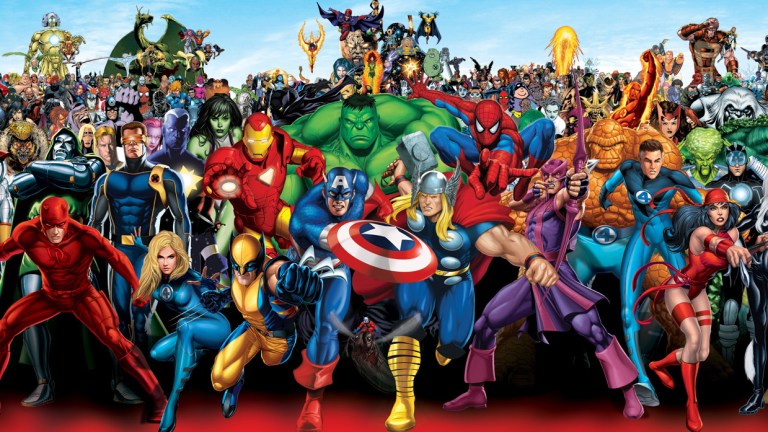Marvel’s 616 Documentary Misrepresents the Actual Marvel Method
"The Marvel Method," Disney+'s promotional episode about comics production, is a harrowing look into the comics production process.

The seventh episode of Marvel 616, the Disney+ documentary series promoting the Marvel brand, is titled “The Marvel Method.” It references the pioneering shift in comics work production that came about at the dawn of the Marvel era of comics, and is ostensibly about the fun, wacky way that Marvel comics get made today. What it actually portrays is a high-stress, broken production process.
Also, nothing that happens in it is consistent with the traditional Marvel Method.
The episode opens with Dan Slott, writer of a near-record 180 issues of Spider-Man comics, and currently Marvel’s Fantastic Four writer, sitting down with 12 weeks of lead time to write his first issue of Iron Man 2020. The writer gets one sentence into the script before being distracted by a Twitter notification. The episode goes on to detail the painstaking process that the Marvel team undergoes to put the first issue of Iron Man 2020 on shelves. Editorial pries a detailed, panel-by-panel script from Slott; hands what they have, a few pages at a time (it’s implied), to artist Pete Woods, who draws and colors the issue; hires Christos Gage to come in and write dialogue for the issues to help make back lost lead time; all while Assistant Editor Alanna Smith and letterer Joe Caramagna are rushing through putting the final touches on the issue as it heads to print.
The episode is a harrowing look at the power dynamics in comics production. Slott and editor Tom Brevoort spend much of their screen time roasting Slott for his perennial lateness, while Smith copyedits the issue standing over a file cabinet and Caramagna sends frantic text messages begging for a script so he can get the issue to the printers. But it also is…bizarrely wrong about the comic creating style the episode is named for.
Prior to the 1960s, a comics writer would write a full script with dialogue, hand that to the penciller, and let the art team do their work, making final tweaks during the lettering process. When Marvel Comics first became a going concern, that flipped. A writer would send the artist a general plot for the issue (or the two would collaborate on the plot); the artist would then block it out and draw it, and the writer would fill in the dialogue over what the artist sent. Larry Hama, a comics legend in his own right (among other things, Hama wrote and drew the silent Snake Eyes issue of G.I. Joe), pointed out in an interview for the episode that it was because Stan Lee was overseeing so many books that the Marvel Method likely grew out of simple deadline pressure.
In fact, deadline pressure might be the only (and most generous) way of understanding how the issue produced for this episode might be considered “Marvel Method.” Slott takes so long to write a script for the book that he can’t write dialogue and reasonably get the book out the door on time, so he merely sends extremely detailed panel descriptions to the artist, while Gage comes on board to write dialogue. It’s a stretch, but it might count.
What was presumably intended as promotional material for Marvel Comics has instead invited a great deal of criticism. Reaction to the episode on social media has been mostly defensiveness. Slott, shown in the episode to be Extremely Online, took to Twitter to address his critics.
Jim Zub, Slott’s Christos Gage on the previous Iron Man series, Tony Stark: Iron Man, jumped in to defend Slott as well.
Woods joined him, claiming the process was heavily edited to add narrative tension.
And Caramagna told Twitter that this wasn’t his worst experience on a book.
Not entirely sure that helped, though.

